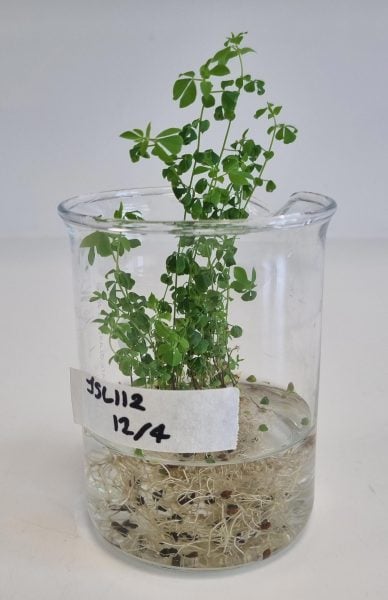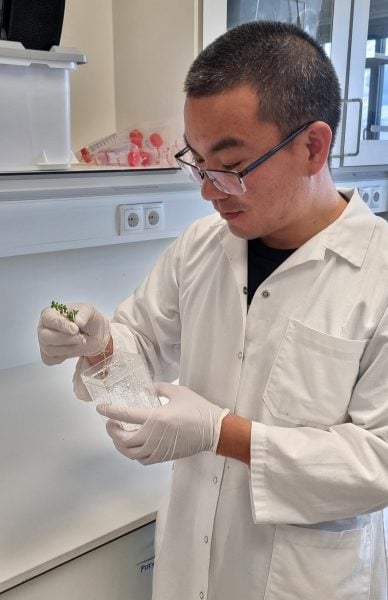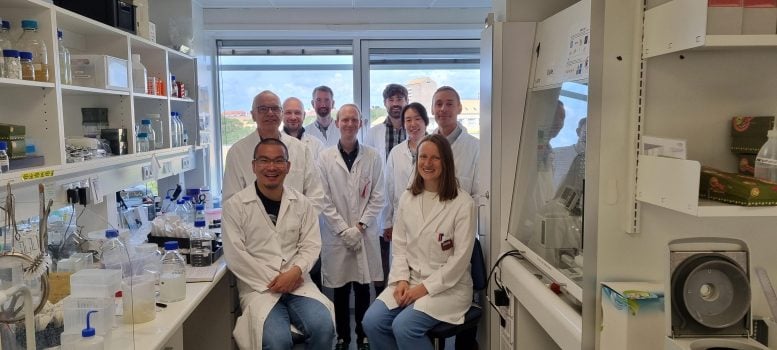
Zinc, long overlooked as a mere micronutrient, turns out to be a game-changer in legume nitrogen fixation.
Scientists have discovered a novel zinc sensor protein, FUN, that acts as a master regulator in this process—helping plants interpret environmental cues and manage nodule efficiency. This breakthrough not only sheds light on the intricate biochemistry behind legume-rhizobia symbiosis, but also opens the door to smarter, greener farming. With better zinc signaling, crops could fix nitrogen more reliably, cutting down on synthetic fertilizers and paving the way for sustainable agriculture.
Zinc’s Hidden Role in Sustainable Farming
Scientists have uncovered a surprising new role for zinc in the way legume plants process nitrogen. Alongside a regulatory protein called Fixation Under Nitrate (FUN), zinc appears to be a key player in helping legumes absorb and use nitrogen more efficiently. This breakthrough could pave the way for improved crop productivity and a reduced need for chemical fertilizers, offering a more sustainable path forward for agriculture.
Legumes are unique among crops because they can form a partnership with rhizobia bacteria, which convert nitrogen from the air into a usable form within special structures called root nodules. However, these nodules are highly sensitive to changes in the environment, such as extreme temperatures, drought, flooding, salty soils, or high levels of nitrogen already present in the ground.

A Zinc Signal Breakthrough
A research team from Aarhus University, working with partners at the Polytechnic University of Madrid and the European Synchrotron Radiation Facility in France, found that zinc acts as a secondary signal within legume plants. This signal helps the plants interpret environmental cues and adjust how efficiently they fix nitrogen. Their study, published in Nature, reveals that the protein FUN is actually a previously unknown type of zinc sensor that can read these zinc signals and regulate the nitrogen-fixation process.
“It’s truly remarkable to discover zinc’s role as a secondary signal in plants. It is a vital micronutrient, and it has never been considered as a signal before. After screening over 150,000 plants, we finally identified the zinc sensor FUN, shedding light on this fascinating aspect of plant biology,” Assistant Professor Jieshun Lin, the study’s first author, explains.
FUN and the Control Switch
In this study the researcher identifies that FUN is an important transcription factor that control nodule breakdown when soil nitrogen concentrations are high: “FUN is regulated by a peculiar mechanism that monitor the cellular zinc levels directly and we show that FUN is inactivated by zinc into large filament structures and liberated into the active form when zinc levels are low,” Professor Kasper Røjkjær Andersen explains.

From an agricultural perspective, continued nitrogen fixation could be a beneficial trait that increases nitrogen availability, both for the legume and for co-cultivated or future crops that rely on the nitrogen left in the soil after legumes are grown. This helps lay the foundations for future research that provides new ways for us to manage our farming systems and reduce the use of nitrogen fertilizer, and reduce its impact on the environment.
A Greener Future for Crop Yields
The implications of this research are significant. By understanding how zinc and FUN regulate nitrogen fixation, researchers are developing strategies to optimize this process in legume crops. This could lead to increased nitrogen delivery, improving crop yields and reducing the need for synthetic fertilizers, which have environmental and economic costs.
What’s Next: Applying the Science
Researchers are now investigating the mechanisms of how zinc signals are generated and decoded by FUN. They are looking forward to applying these new discoveries to legume crops such as faba bean, soybean, and cowpea.

Reference: “Zinc mediates control of nitrogen fixation via transcription factor filamentation” by Jieshun Lin, Peter K. Bjørk, Marie V. Kolte, Emil Poulsen, Emil Dedic, Taner Drace, Stig U. Andersen, Marcin Nadzieja, Huijun Liu, Hiram Castillo-Michel, Viviana Escudero, Manuel González-Guerrero, Thomas Boesen, Jan Skov Pedersen, Jens Stougaard, Kasper R. Andersen and Dugald Reid, 26 June 2024, Nature.
DOI: 10.1038/s41586-024-07607-6
Jieshun Lin, Peter K. Bjørk, Jens Stougaard, Kasper R. Andersen, and Dugald Reid are inventors on a filed patent that captures these discoveries.
This work was supported by the project Enabling Nutrient Symbioses in Agriculture (ENSA), that is funded by Bill & Melinda Gates Agricultural Innovations (INV- 57461), the Bill & Melinda Gates Foundation and the Foreign, Commonwealth and Development Office (INV-55767), the Carlsberg Foundation grant (CF21-0139) and the European Research Council (ERC) under the European Union’s Horizon 2020 research and innovation program (grant agreement No. 834221).
A version of this article was originally published in July 2024.
Never miss a breakthrough: Join the SciTechDaily newsletter.